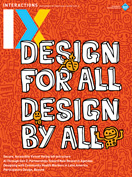Authors:
Ted Selker, Justin Pelletier
The user experience of voting seems simple: a mark next to a choice. The fact that it determines the direction society is headed makes creating and counting this mark a central point of control. Organizing voting processes to collect, count, and report votes correctly often seems like an arms race between major political players. Indeed, people serve time for felonies, including stopping voters from getting to a polling place, turning them away, giving them incorrect ballots, destroying or subverting the mechanisms for depositing votes, not depositing ballots, destroying deposited ballots, altering ballots, and incorrectly counting ballots. Civilization learned a…
You must be a member of SIGCHI, a subscriber to ACM's Digital Library, or an interactions subscriber to read the full text of this article.
GET ACCESS
Join ACM SIGCHIIn addition to all of the professional benefits of being a SIGCHI member, members get full access to interactions online content and receive the print version of the magazine bimonthly.
Subscribe to the ACM Digital Library
Get access to all interactions content online and the entire archive of ACM publications dating back to 1954. (Please check with your institution to see if it already has a subscription.)
Subscribe to interactions
Get full access to interactions online content and receive the print version of the magazine bimonthly.






